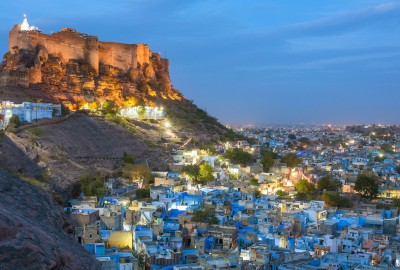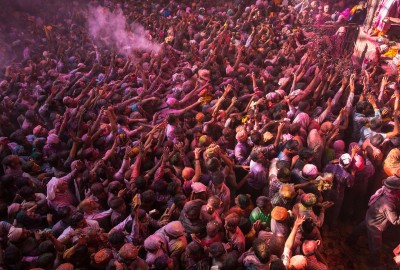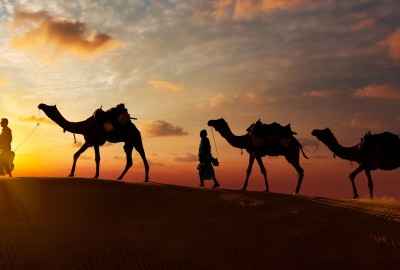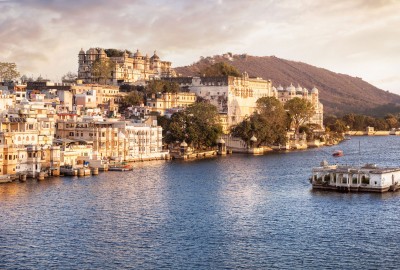30 DAYS & 29 NIGHTS
DELHI I VARANASI I KHAJURAHO I AGRA I RANTHAMBHORE I JAIPUR I UDAIPUR I AURANGABAD I MUMBAI I COCHIN I ALLEPPEY I MUNNAR I PERIYAR I MADURAI I TRICHY I PONDICHERRY I CHENNAI I KOLKATA
As the name suggests – this is truly an “grand” experience offering you the best of the Indian sub-continent with all its diversity. Vibrant Indian cultures, breathtaking scene.
Detailed Itinerary
Assistance on arrival.
Transfer to your Hotel.Briefing of the tour by the executive
Delhi – discover that India’s capital is sprinkled with glittering gems: captivating ancient monuments, magnificent museums, a vivacious performing-arts scene and some of the subcontinent’s yummiest places to eat.Overnight at hotel
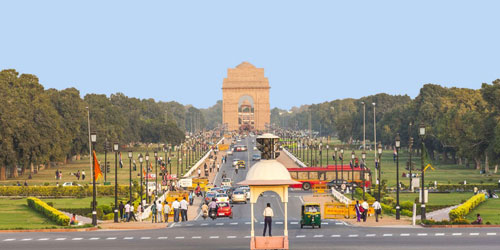
Full day guided tour of Old & New Delhi
Delhi, the capital of India comprises of conspicuously contrasting Old and New Delhi. Old Delhi was the capital of Muslim India between the 12th and 19th centuries and one can find mosques, monuments and forts related to Muslim history. New Delhi is the imperial city created as India's capital by the British intricately planned and comprises of imposing buildings displaying various modern style of architecture.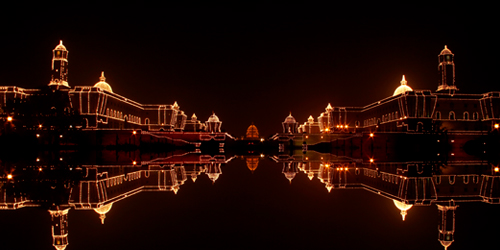
Red Fort

Jama Masjid
Then visit Raj Ghat (The cremation ground of the father of the Nation Mahatma Gandhi)
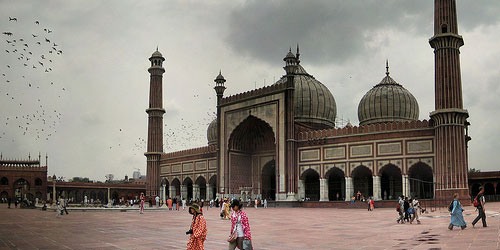
Humayun's Tomb
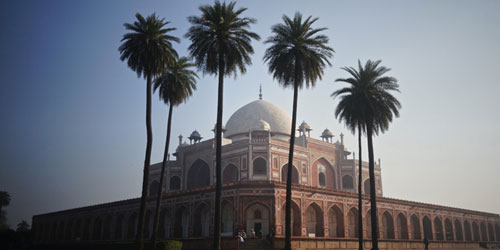
Qutab Minar
Overnight at hotel
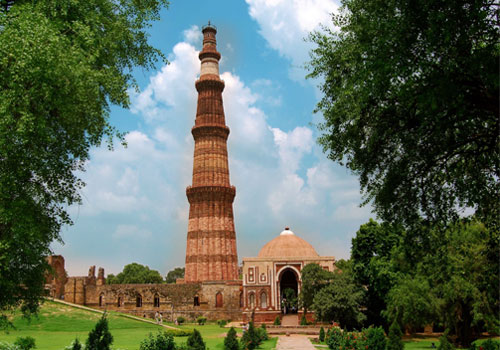
Transfer to Delhi airport in time to connect flight to Varanasi
Meet/Assist on arrival and transfer to hotelSarnath
It is the place where Lord Buddha delivered his first sermon. Excavations by the Archaeological Survey of India at Sarnath have revealed many structures which represent facets of the Buddhist history visit the Archaeological Museum, Chaukhandi Stupa, Ashoka Pillar and Sri Lankan Temple. The Archaeological Museum in Sarnath is one of the most famous museums of its kind in Southeast Asia. The museum is situated very near the historical ruins. It contains a huge collection of sculptures.Overnight at hotel
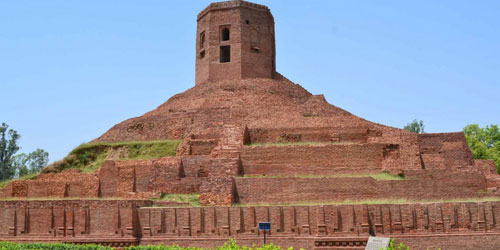
Return to the hotel for breakfast
Transfer to Varanasi airport in time to connect flight to KhajurhaoKhajuraho is a small town located in the Bundelkhand region (Chhatarpur District) of Madhya Pradesh and is famous for groups of Hindu and Jain temples. These temples are a UNESCO World Heritage site for their beautiful and erotic rock carvings.
Khajuraho has the Vindhya range of mountains as its beautiful backdrop which makes Khajuraho a more fascinating destinationOvernight at hotel
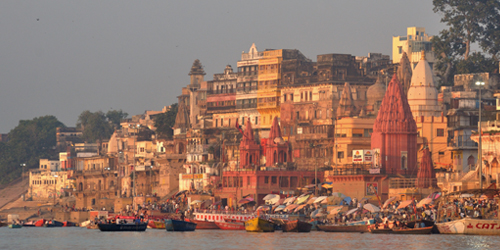
Depart for sightseeing tour of Eastern & Western Group of Temples
Western Group of TemplesLakhmana Temple - The oldest and finest of the western group of temples, named after the ruler that built the temple. The A horizontal beam over the entrance of this beautiful Vaishnavite temple shows the trinity of Brahma, Vishnu and Shiva. Kandariya Mahadeo Temple - This temple is decorated with a profusion of sculptures that are among the greatest masterpieces of Indian art. Devi Jagdamba Temple - Dedicated to the Goddess (devi), this is smaller and much more delicately proportioned temple and is home to some of the finest sculptures of Khajuraho. The garbha griha has a huge image of the Devi of the Universe (Jagdambi), though it appears to have started as a Vishnu temple. It has the usual three bands of sculptures, but the third and most uppermost of these houses some of the most erotic sculptures.
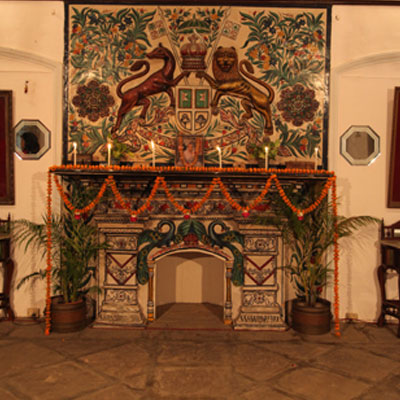
Eastern Group of Temples
Parsvanath Temple - Largest among the group, with exquisite carvings in detail. The sculptures on the northern outer wall are the highlights of this temple. The image was installed in 1860.
Ghantai Temple - This Jain temple has a frieze which depicts the 16 dreams of Mahavira's mother, and a jain goddess on a winged Garuda. Other temples in the group are Adinath Temple, Hanuman Temple & Brahma Temple.Overnight at hotel
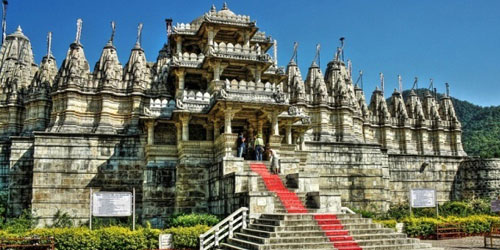
Transfer to Jhansi train station en route visiting Orchha
Orchha was founded in the 16th century by the Bundela Rajput chieftain, Rudra Pratap, who chose this stretch of land along the Betwa river as an ideal site for his capital. Of the succeeding rulers, the most notable was Raja Bir Singh Ju Deo who built the exquisite Jehangir Mahal, a tiered palace crowned by graceful chhatris. From here the view of soaring temple spires and cenotaphs is spectacular.Orchha Fort -
The fort is reached by an arched bridge and the three palaces set in an open courtyard within the fort are the first buildings to explore. The tiered Jahangir Mahal was built in 1606 to commemorate the visit of Emperor Jahangir in 1606. The Raj Mahal, to the right of the courtyard, was built by Madhukar Shah and has bold colorful murals inside. The third palace, is the Rai Praveen Mahal, which is a two storey brick structure set in the gardens of Anand Mahal. Of the many temples within the fort, three are especially worth visiting. The Ram Raja Mandir was originally a palace and became a temple more by accident than design. An image of Ram was installed while the temple, The Chaturbhuj was being built for it. For some reason the image could not be moved from the palace and despite its spires and ornate decoration became a sacred place. Linked to the Ram Raja is the Lakshminarayan temple, the interiors of which have some of the best preserved murals and wall paintings in Orchha.Continue your drive to Jhansi train station in time to board train to Agra
Meet/Assist on arrival and transfer to hotelAgra is famous as being home to one of the Seven Wonders of the world - The Taj Mahal. The architectural splendor of the Moslems, the fort and the palaces is a vivid reminder of the opulence of the legendary Mughal empire, of which Agra was the capital in the 16th and early 17th centuries. While its significance as a political center ended with the transfer of the capital to Delhi in 1634 by Shah Jahan, its architectural wealth has secured its place on the international map.
Overnight at hotel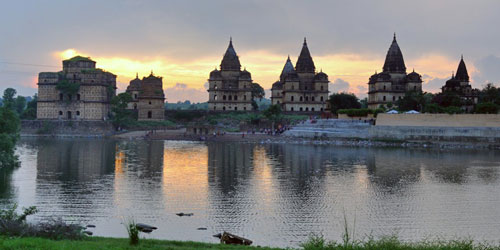
Depart for sightseeing tour of Taj Mahal (Closed on Friday) (UNESCO WORLD HERITAGE SITE)
Describe as a most extravagant monument ever build for love, this sublime Mughal mausoleum is India’s most ogled icon. The Taj was built by Emperor Shah Jahan as a memorial for his second wife, Mumtaz Mahal, who died giving birth to their 14th child in 1631. The death of Mumtaz left the emperor so heartbroken that his hair is said to have turned grey virtually overnight. Construction of the Taj began in the same year and was not completed until 1653. Not long after it was finished, Shah Jahan was overthrown by his son Aurangzeb and imprisoned in Agra Fort where, for the rest of his days, he could only gaze out at his creation through a window. Following his death in 1666, Shah Jahan was buried here alongside Mumtaz.
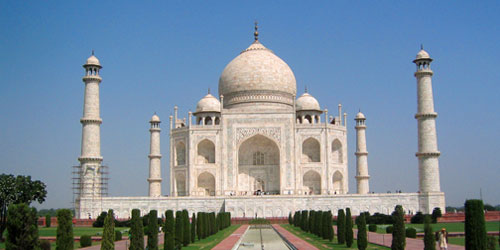
AGRA FORT
Also visit local market and a marble factory where you can actually see the inlay work being done on marble like it was done for Taj in the past.
Overnight at hotel
Depart for Ranthambhore en route visiting Fatehpur Sikri
The Mughal Emperor Akbar built Fatehpūr Sikrī about 35 km from Agra, and moved his capital there. Later abandoned, the site displays a number of buildings of significant historical importance. A World Heritage Site, it is visited by most tourists. The name of the place came about after the Mughal Emperor Barbar defeated Rana Sanga in a battle at a place called Sikrī . Then the Mughal Emperor Akbar wanted to make Fatehpūr Sikrī his head quarters, so he built a majestic fort; due to shortage of water, however, he had to ultimately move his headquarters to Agra Fort.Continue your drive to Ranthambhore & check in at Hotel.
Jaipur was founded in 1727 by Maharaja Sawai Jai Singh II and is the first well planned city of India, located in the desert lands of India, Rajasthan. The city which once had been the capital of the royalty now is the capital city of Rajasthan. The very structure of Jaipur resembles the taste of the Rajputs and the Royal families. In the present date, Jaipur is the major business centre for the natives of Rajasthan with all requisites of a metropolitan city.Overnight at hotel
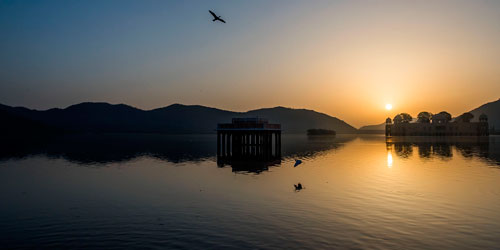
We ascend to the fort on Elephant's back and come down in Jeep.
Pronounced ‘Amber’ and meaning ‘High’, this wraithlike fort – palace beautifully illustrates Rajput artistry in the faded shades of the reddish pink. Situated on the rugged hills 1 Km north of town, Amber was once the ancient capital of the Jaipur state.
Hawa Mahal
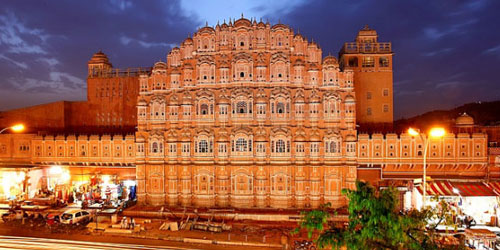
Jantar Mantar
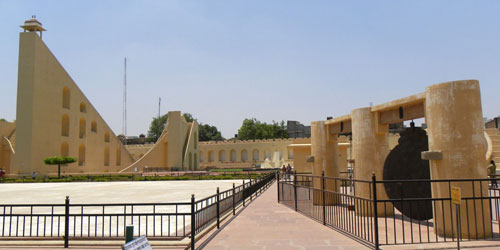
City Palace Museum
The tour of Jaipur is not complete without shopping as Jaipur is known as a shopper’s paradise famous for jewellery, handicraft, carpet, blue pottery and textiles
Overnight at hotel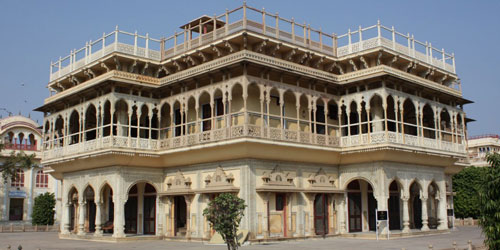
Depart for Udaipur and check in at hotel
Udaipur was the capital of the Rajpur kingdom of Mear, ruled by the Sisodia clan. The founder of Udaipur was Rana Udai Singh. The ancient capital of Mewar was Nagda, located on the Banas River northeast of Udaipur. Legend has it that Maharana Udai Singh came upon a hermit while hunting in the foothills of the Aravalli Range. The hermit blessed the king and asked him to build a palace on the spot and it would be well protected. Udai Singh established a residence there. In 1568 the Mughal emperor Akbar captured Chittor, and Udai Singh moved the capital to the site of his residence, which became the city of Udaipur. As the Mughal empire weakened, the Sisodia ranas, and later maharanas, reasserted their independence and recaptured most of Mewar except the fort of Chittor. Udaipur remained the capital of the state, which became a princely state of British India in 1818. After India's Independence in 1947, the Maharaja of Udaipur acceded to the Government of India, and Mewar was integrated into India's Rajasthan state. The city's pride , the 'Lake Palace' was once a prison.Overnight at hotel
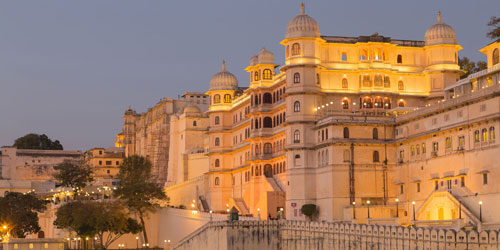
Depart for Half day guided tour of Udaipur – also known as City of lakes visiting
City Place - standing on the east bank of Lake Pichola is a massive series of palaces built at different times from 1559. The balconies of the palace provide panoramic views of "Jag Niwas" (the Lake Palace Hotel), Jag Mandir on one side and on the other the city of Udaipur. Its main entrance is through the triple-arched gate - the Tripolia, built in 1725. The way now leads to a series of courtyards, overlapping parations, terraces, corridors and gardens. There is a Suraj Gokhda, where the maharanas of Mewar presented themselves in the times of trouble to the people to restore confidence. The Mor-chowk (Peacock courtyard), gets its name from the mosaics in glass decorating its walls. The chini chitrashala is noteworthy while a series of wall paintings of Krishna are on display in Bhim Vilas. There are numerous other Palaces such as Dilkhush mahal, Sheesh mahal, Moti mahal and Krishna vilas - in memory of a princess of striking beauty who poisoned herself to avert a bloody battle for her hand by rival princes. Now the palace contains many antique articles, paintings, decorative furniture and utensils and attracts thousands of visitors every day,
Sahelion ki Bari
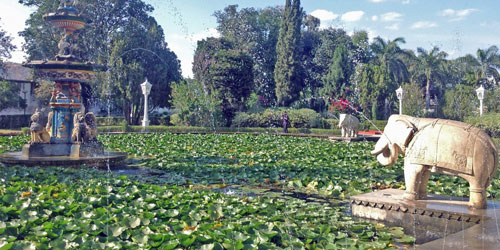
Lake Pichola
Overnight at hotel
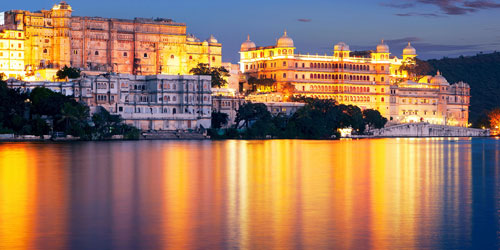
Transfer to Udaipur airport in time to connect flight to Aurangabad via Mumbai (change of plane in Mumbai).
Meet/Assist on arrival and transfer to Hotel.Overnight at hotel
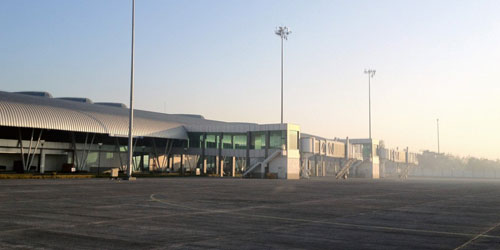
Depart for Full day excursion to Ajanta & Ellora Caves.
Ajanta Caves (Closed on Tuesday)AJANTA is world's greatest historical monument recognised by UNESCO near Jalgaon city of Maharashtra, India. There are 30 caves in Ajanta of which 9, 10, 19, 26 and 29 are Chaitya-grihas and the rest are monasteries. These caves were discovered in AD 1819 and were built up in the earlier 2nd century BC-AD. The paintings are executed on a ground of mud-plaster in the tempera technique.
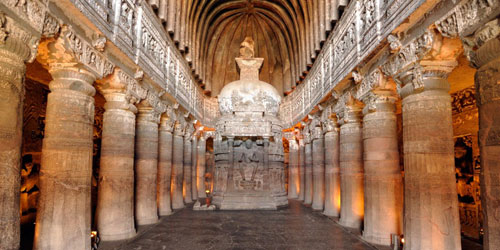
Ellora Caves (Closed on Mondays)
Overnight at hotel
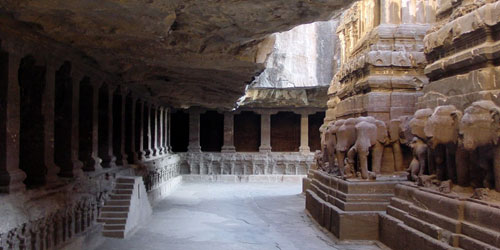
Transfer to Aurangabad airport in time to connect flight to Mumbai.
Bombay, is the capital of the Indian State of Maharashtra. The city is the second most-populous in the world; with approximately 14 million inhabitants along with the neighbouring cities of Navi Mumbai and Thane it forms the world’s 4th largest urban agglomeration, with around 19 million people. Mumbai lies on the west coast of India and has a deep natural harbour.Meet/Assist on arrival and transfer to Hotel.
Overnight at hotel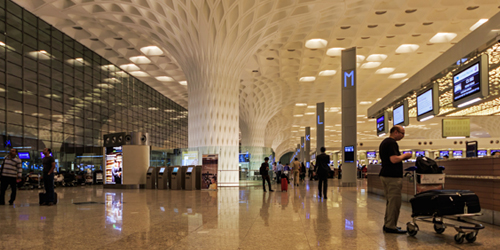
Depart for sightseeing tour of Mumbai.
Elephanta CaveExcursion by motor launch to Elephanta Caves - 9 kms in the sea. These 7th century rock cut cave temples dedicated to Lord Shiva are situated on top of a hill on the island.
The Elephanta Caves are caves located on Elephanta Island in the Arabian Sea near Mumbai, contain Shaivistic high reliefs in stone of Hindu Deities important to worshipers of Shiva. The sculptures were created beginning in the late Gupta Empire, or sometime after, and at later dates. Elephanta Island was designated a UNESCO World Heritage Site in 1987 to preserve the artwork. The original name of this epitome of temple art is Agraharpuri, Agrahar. Agrahar is the necklace or most important neck ornament. The Agraharpuri slowly became Gharapuri; still retaining the original meaning as the focal point of Gharapuri Island, which was renamed Elephanta Island by the Portuguese and is located in Mumbai Harbour off the coast of Mumbai (formerly known as Bombay).Afternoon half day sightseeing tour of Mumbai

Gateway of India
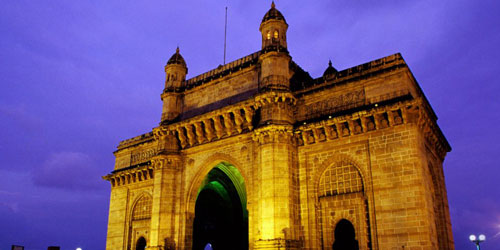
Marine Drive

Crawford Market
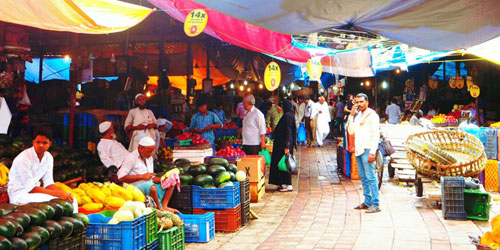
Dhobi Ghat
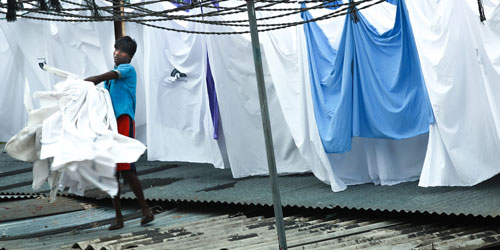
Mani Bhavan
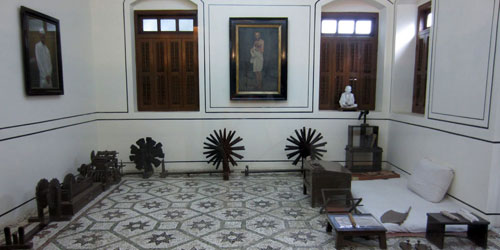
Hanging Garden
Overnight at hotel

Transfer to Mumbai domestic airport in time to connect flight to Cochin
Meet/Assist on arrival and transfer to hotelKochi (colonial name Cochin) is a vibrant city situated on the south-west coast of the Indian peninsula in the breathtakingly scenic and prosperous state of Kerala, hailed as 'God's Own Country'. Its strategic importance over the centuries is underlined by the sobriquet Queen of the Arabian Sea. Informally, Cochin is also referred to as the Gateway to Kerala.
In the evening you will be invited to witness KATHAKALI – the ancient and traditional dance drama of Kerala. The drama shows different scenes from the epics of Maharabharata and Ramayana. To understand the entire process you must reach the place an hour before the show and see the make-up being done on the artists.Overnight at hotel

Depart for half day sightseeing tour of Cochin visiting
Jewish Synagogue (Closed on Fridays & Saturdays) – built in 1568 the oldest synagogue in the commonwealth stands, adorned by hundreds of exquisite hand – painted Chinese tiles in blue at the heart of what is locally called the Jew Town lies the Synagogue of the white Jews near Mattancherry palace. The Synagogue is now a fascinating mixture of shops, warehouses and spice auction rooms. The Great Scrolls of the Old Testament and the Copper Plates recording the grants of privilege made by the Cochin rulers to the Jewish community are displayed here.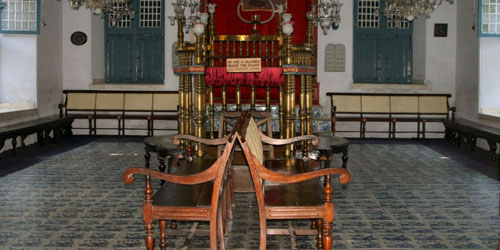
Dutch Palace (closed on Fridays)
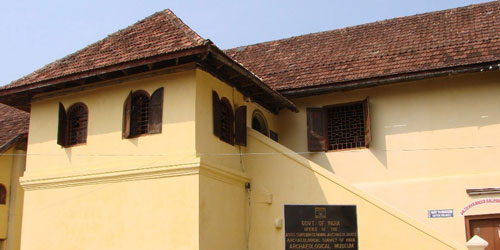
Chinese Fishing Nets, Fort Kochi
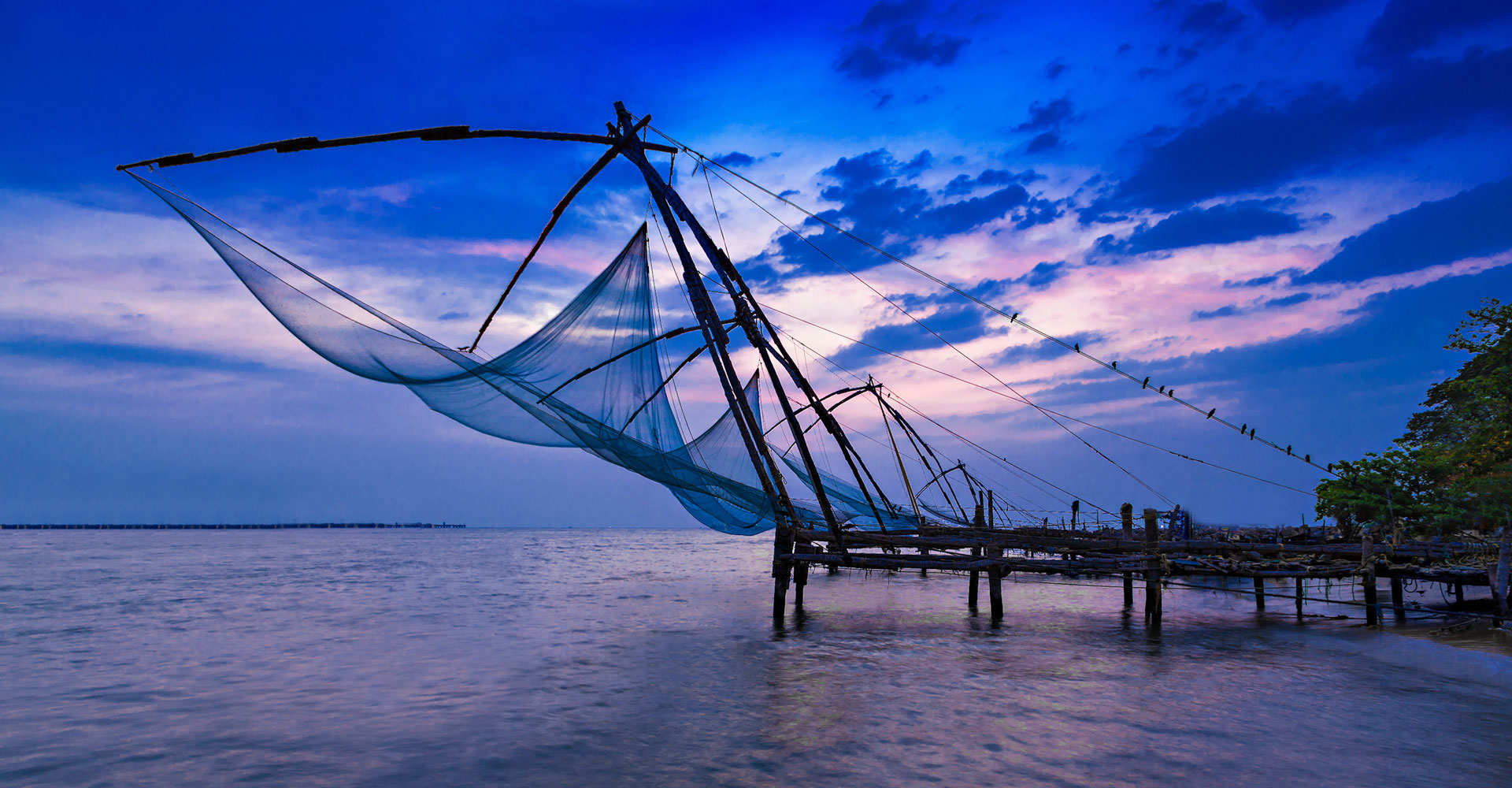
St. Francis Church
Afternoon is free to relax
Overnight at hotel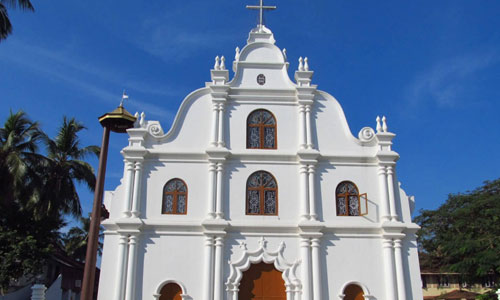
Depart for Alleppey boat Jetty in time to board Rice houseboat
Afternoon you would be sailing in the canales of the massive lake where you can see people doing their daily ritualOvernight at hotel
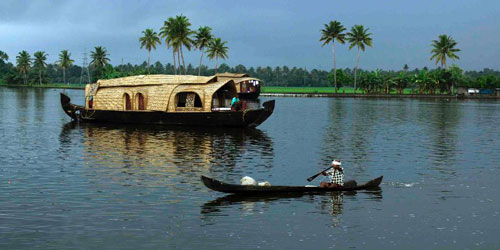
Drive to Munnar and check in at hotel
Munnar is Kerala’s premium hill station. A hill station transcending excellence – Munnar is surrounded by gently undulating hills swathed in the soothing green of vast tea estates makes it perfect tourist destination in south India. Situated at an altitude of 1600 m above sea level, its bracing climate with the laidback atmosphere and its delightfully refreshing colonial air makes it the most sought-after destinations.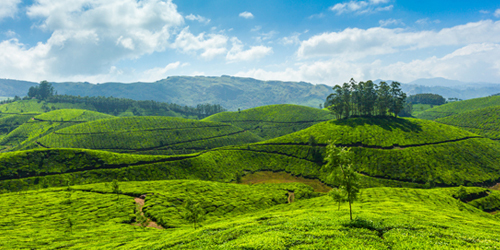
Tea Gardens

Eravikulam Sanctuary
The national park has a large variety of flora and fauna with over 26 species of mammals, 132 species of birds, 101 species of butterflies, 19 species of amphibians and 20 species of orchids already registered in the park books.
Overnight at hotel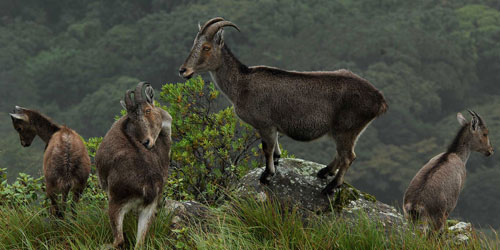
Drive to Periyar and check in at hotel
Set high in the ranges of the Western Ghats, in God’s Own Country, Kerala, is the Periyar National Park and Tiger Reserve. Periyar wildlife sanctuary has a picturesque lake at the heart of the sanctuary. Formed with the building of a dam in 1895, this reservoir meanders around the contours of the wooded hills, providing a permanent source of water for the local wildlife. Though it is a Tiger Reserve, tourists come here to view the Indian Elephant in the act of ablution and playfulness by the Periyar lake.In the afternoon you will be taken into the park. The most thrilling and ideal way to move into the park is by a boat cruiser. The boat cruiser will allow you harmonize with the natural surroundings of the Periyar Sanctuary.
Overnight at hotel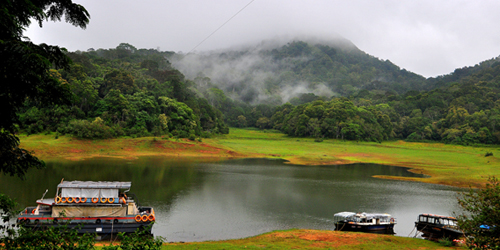
Breakfast in the hotel
Drive to Madurai and check in at hotelEvening witness closing ceremony at Meenakshi Temple
Overnight at hotel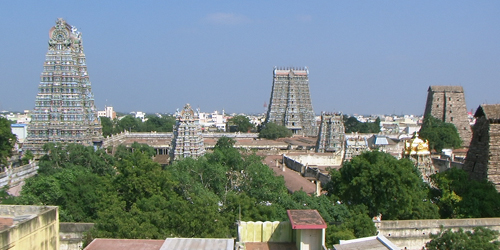
Depart for half day sightseeing tour of Madurai
Madurai is a major city in Tamil Nadu and home to the Meenakshi Temple. It is one of the most ancient heritage sites of India truly reflective of the cultural ethos of India. It is also known as the Temple City of India. You can find temples in almost every street in Madurai. The city is called "Thoongaa Nagaram", which means Sleepless City. You can find coffee/tea shops open at almost any time of day and night.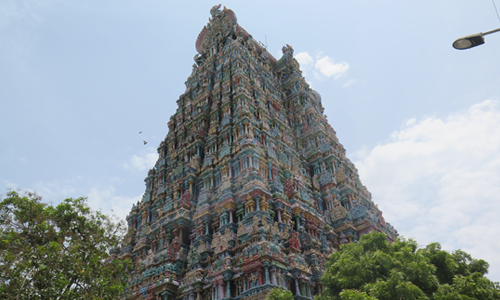
Meenakshi Temple

Thirumala Nayak Palace
Also visit the bustling market of Madurai outside the Meenakshi Temple.
Afternoon is free to relaxOvernight at hotel
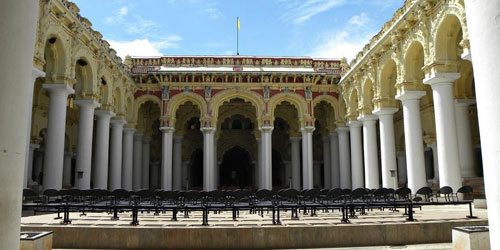
Depart for Trichy and check in at hotel
Afternoon tour of Trichy Tiruchirapalli, situated on the banks of the river Cauvery is the fourth largest city in Tamil Nadu. It was citadel of the early Cholas which later fell to the Pallavas. Trichy is a fine blend of tradition and modernity built around the Rock Fort. Apart from the Fort, there are several Churches, Colleges and Missions dating back to the 1760s. The town and its Fort, now in Trichy were built by the Nayaks of Madurai. This city has given great Tamil scholars whose contributions to the Tamil literature have been very significant. The most famous landmark of this bustling town is the Rockfort Temple, a spectacular monument perched on a massive rocky out crop which the wards of the Carnatic were fought in the 18th century. The city is a thriving commercial centre in Tamil Nadu and is famous for artificial diamonds, cigars, handloom cloth, glass bangles and wooden and clay toys.Overnight at hotel

Depart for Pondicherry en route visiting Tanjore
Tanjore is the "Rice Bowl of Tamil Nadu" and famous for the Brahadeeswarar Temple. The temple which was constructed almost thousand years ago by the King Rajarajan, is an architect's marvel. It is a flourishing centre for bronze sculpture and painting.Thanjavur was the royal city of the Cholas, Nayaks and the Mahrattas. Thanjavur was at height of its glory during Rajaraja Cholan. The Big Temple and the other famous temples in the district are known all over the World. Thanjavur was the cultural capital of the country in 1790. Thanjavur gained prominence during the period of Chola Kings, who made it as their capital. It is known as the Granary of the South India lying in the deltaic region of the famous river Cauvery.
Overnight at hotel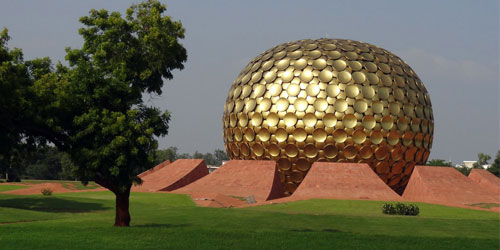
Depart for Chennai en route visiting Mahaballipuram and Kancheepuram
Mahabalipuram also known as Mamallapuram is a town in Kancheepuram district in the Indian state of Tamil Nadu. It has an average elevation of 12 metres (39 feet). Mahabalipuram was a 7th century port city of the South Indian dynasty of the Pallavas around 60 km south from the city of Chennai. It is believed to have been named after the Pallava king Mamalla. It has various historic monuments built largely between the 7th and the 9th century, and has been classified as a UNESCO World Heritage Site. The monuments are mostly rock-cut and monolithic, Some important sculptures are The Shore Temple - a structural temple along the Bay of Bengal with the entrance from the western side away from the sea. Recent excavations have revealed new structures here. The temple was reconstructed stone by stone from the sea after being washed away in a cyclone. Pancha Rathas (Five Chariots) - five monolithic pyramidal structures named after the Pandavas (Arjuna, Bhima, Yudhishtra, Nakula and Sahadeva) and Draupadi. An interesting aspect of the Rathas is that, despite their sizes they are not assembled — each of these is carved from one single large piece of stone & other temples.
Kancheepuram
Continue your drive to Chennai
Chennai formerly known as Madras, is the capital city of the Indian state of Tamil Nadu.Chennai, popularly regarded as the Gateway to the South, is the capital city of Tamil Nadu. It is the fourth largest metropolis in India, located on a 17 km stretch of the Coromandel Coast. The city grew up around the English settlement of Fort St. George and gradually absorbed the surrounding towns and villages. However, despite the strong British influence, Chennai has retained its traditional Tamil heritage and effectively blended it to create a unique synthesis of cultures.
Overnight at hotel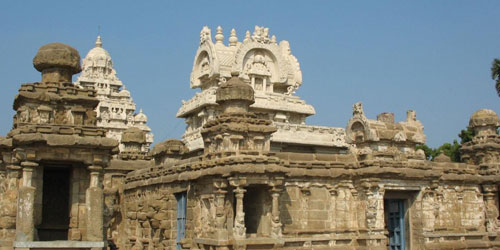
Depart for half day sightseeing tour of Chennai visiting
Fort St. George Fort is located on the banks of Bay of Bengal. It was built by the British East India Company in 1640 AD. The fort is believed to be the first establishment of the British in India. It is a military architecture marvel, which was erected as a trading post and later evolved to be the origin of modern Indian Army. Situated in the coastal state of Tamil Nadu, this ancient monument is worth watching on your trip to Chennai. St. George Fort holds great historical importance and is looked after by the Archaeological Survey of India & also visitThe Fort St. George Museum. The Museum began with a small collection of objects of the British Raj donated by the then Madras Presidency Government, the St. Mary's Church authorities, the disbanded army units and others.
Also visit The Hindu Temple and Marina Beach –the Second longest in the world, running 12 km in length.Afternoon is free to relax
Overnight at hotel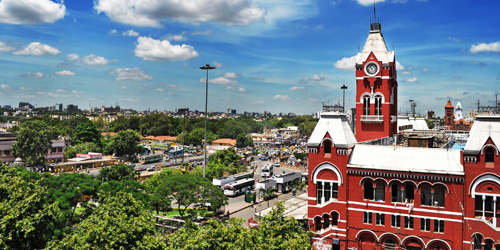
Transfer to Chennai domestic airport in time to connect flight to Kolkata
Meet/Assist on arrival and transfer to hotelKolkata, a city that means different things to many people. For some, Kolkata is the city of joy, while for others it is dirty, crowded, and noisy. Once the greatest colonial city in the Orient, Kolkata was later reviled as a cauldron of poverty, dirt, and disease. Today, it ranks among the four major metropolis of India along with Delhi, Mumbai, and Chennai. A mere village in the 17th century, Kolkata is not an ancient city like Delhi. Like Mumbai and Chennai, it originated largely due to the expansionist ambitions of the European powers, especially the British Raj. Little wonder, Kolkata has some of the finest Raj edifices built in a variety of styles
Overnight at hotel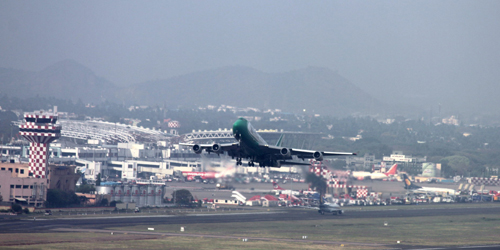
Depart for half day sightseeing tour of Kolkata visiting
The Victoria Memorial is built in white marble from Rajasthan in commemoration of Queen Victoria who also carried the title of Empress of India. It currently serves as a Museum and a tourist attraction.The Memorial was designed by Sir William Emerson in an architectural style similar to Belfast City Hall. He was earlier asked to design the building in the Italian Renaissance style but Emerson was against the exclusive use of European styles and used Indo-Saracenic style, incorporating Mughal elements in the structure.
Also visit the Parshvnath Jain Temple - this ornate Digamber Jain Temple built in the central Indian style by a Jeweller in 1867, is dedicated to the 10th Tirathankara.Afternoon is free to relax
Overnight at hotel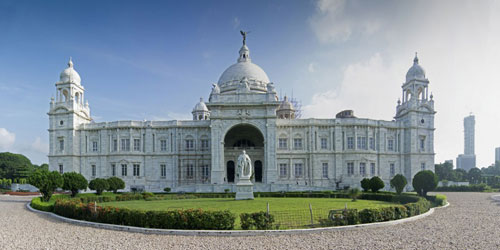
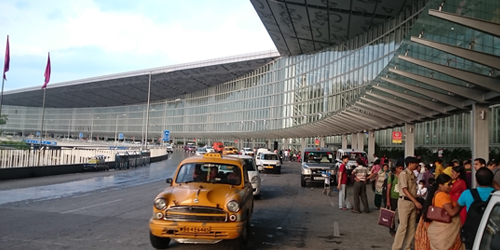
COST & INCLUSIONS
| Premier | Premier | Luxury | Comfort | |
|---|---|---|---|---|
| Summer | US$ 7900 | US$ 7482 | US$ 5032 | US$ 4529 |
| Winter | US$ 10519 | US$ 9821 | US$ 5871 | US$ 5150 |
| Delhi | Oberoi | Taj Palace Hotel | The Lalit | Surya Hotel |
| Varanasi | Radisson Hotel | Brij Rama Palace | Ramada Hotel | Hindustan International |
| Khajuhrao | The Lalit | The Lalit | Radisson Hotel | Ramada Hotel |
| Agra | Oberoi Amarvilas | ITC Mughal | Trident | Crystal Sarovar |
| Ranthambhore | Oberoi Vanyavilas | Taj Sawai Madhopur Lodge | Naghargarh | Pugmark |
| Jaipur | Oberoi Rajvilas | Taj Rambagh Palace | Trident | Holiday Inn |
| Udaipur | Oberi Udaivilas | Taj Lake Palace | Trident | Udaikothi |
| Aurangabad | Vivanta by Taj | Vivanta by Taj | Welcom Rama | Lemon Tree |
| Mumbai | The oberoi | Taj Mahal Palace & Tower | Trident | Fariyas Hotel |
| Cochin | Vivanta by Taj - Malabar | Vivanta by Taj - Malabar | Fragnant Nature | Fort House |
| Alleppey | Premium Houseboat | Premium Houseboat | Deluxe Houseboat | Deluxe Houseboat |
| Munnar | Windermere | Franget Nature | Parakatt Nature | Abad Copper Castle |
| Periyar | Spice Village | Spice Village | Greenwood | Abad Copper Castle |
| Madurai | The Gateway Hotel | The Gateway Hotel | Sangam Hotel | Fortune Pandiyan |
| Trichy | Sangam Hotel | Sangam Hotel | Sangam Hotel | Sangam Hotel |
| Pondicherry | Palasis de Mahe | Palasis de Mahe | Mainson Perumal | The Promenade |
| Chennai | Taj Coromandel | Taj Coromandel | ITC Grand Chola | Raintree Hotel |
| Kolkata | Oberoi Grand | Taj Bengal | The Lalit | Park Plaza |
 Tour Includes
Tour Includes
Share twin accommodation with breakfast
Transfers & sightseeing tours by private air conditioned vehicle
Services of English speaking local guides
Rickshaw ride in Old Delhi;
Boar ride on Ganges in Varanasi
AC Chair car train ticket for travel Jhansi/Agra
02 Canter/Jeep Safari in Ranthambhore on sharing basis
Lunch & Dinner at Ranthambhore
Elephant ride at Amber Fort in Jaipur
Boat ride on Lake Pichola in Udaipur
Kathakali Dance Drama tickets in Cochin
Boat ride on Lake Periyar
Present Applicable taxes as on 15th, Jan 2020
 Tour Excludes
Tour Excludes
Entrance tickets to Monuments/National Park
Domestic Airfare
Visa fee & Insurance;
Items of personal nature i.e. laundry, telephone, camera fee, drinks & tips etc

